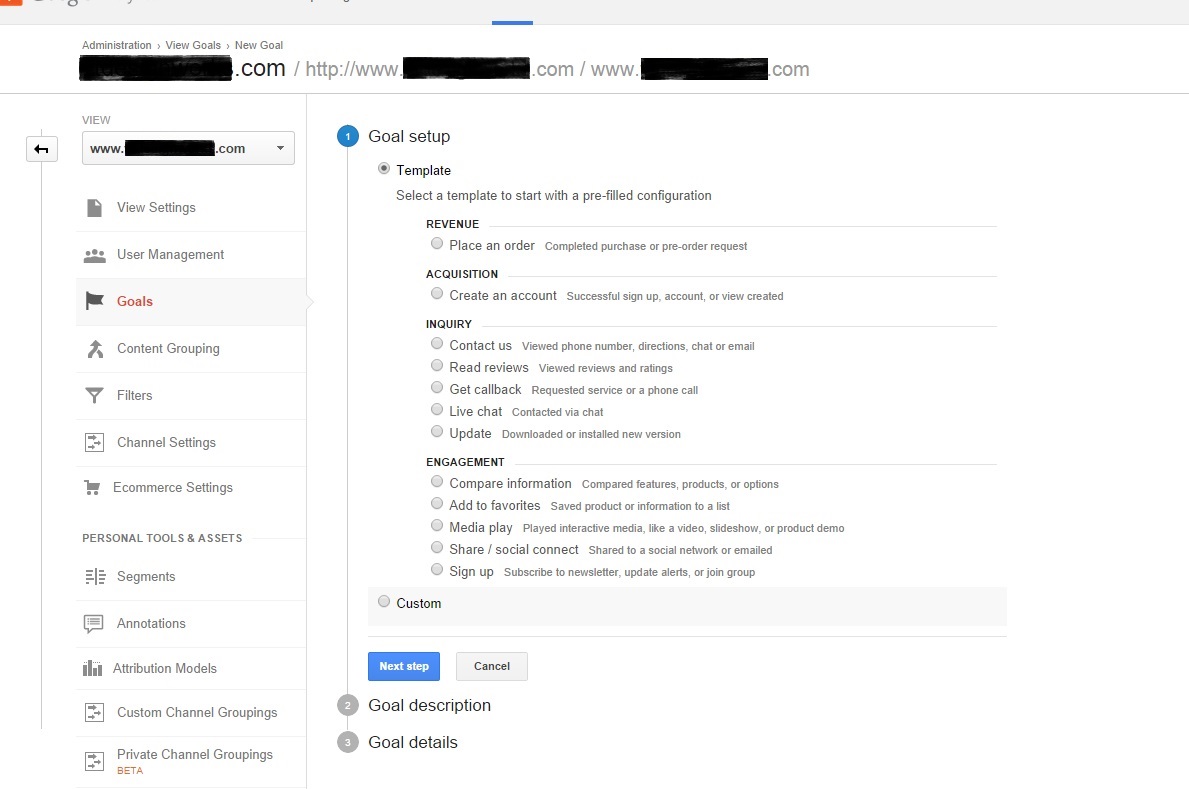Introducing the Blind Attractions: Comprehending What Google Analytics Goals Can not Measure
In the realm of electronic analytics, Google Analytics stands as an effective device for monitoring and assessing on the internet customer communications. Recognizing what Google Analytics goals can not determine is crucial for acquiring an extensive sight of individual actions and engagement.
User Actions on External Operatings Systems
Recognizing just how users communicate on outside systems is essential for maximizing online techniques. External systems, such as social media networks, referral web sites, and on-line forums, play a considerable duty in driving website traffic to a company's internet site. By evaluating individual actions on these systems, businesses can acquire beneficial insights into the effectiveness of their marketing efforts and the choices of their target audience.
One key facet of individual behavior on external systems is the reference resource. By tracking where the individuals are originating from, organizations can recognize which systems are driving the most traffic to their website. This details can help firms allot their resources extra successfully, focusing on the platforms that produce the best results.
Offline Communications and conversions
Evaluating user habits on external platforms provides valuable insights into online methods; however, considering offline conversions and interactions is equally critical for a detailed understanding of a company's total efficiency. While Google Analytics excels at tracking online interactions, it drops short in capturing the complete consumer trip that often includes offline touchpoints. Offline conversions, such as in-store acquisitions or phone questions, play a considerable duty in numerous companies' success. Disregarding these interactions can cause an altered sight of the performance of advertising and marketing projects and overall organization efficiency.

Attribution Beyond Last Click
When diving into the world of electronic advertising and marketing analytics, it ends up being vital to look past the single touchpoint of the last click for an extra comprehensive understanding of acknowledgment. While Google Analytics provides valuable insights into customer actions, counting solely on last-click attribution can be limiting - what data is google analytics goals unable to track. Attribution models that exceed the last click provide a more nuanced sight of the customer trip, taking into consideration all the touchpoints that cause a conversion
Acknowledgment beyond the last click allows online marketers to appoint credit score to numerous communications along the conversion path, providing a more clear photo of the performance of various advertising channels. By checking out multi-touch acknowledgment models such as straight, time decay, or position-based acknowledgment, services can better allocate their marketing spending plans and enhance their methods for maximum effect.
Understanding the impact of each touchpoint in the conversion procedure is vital for making informed decisions and taking full advantage of ROI. By welcoming acknowledgment beyond the last click, services can obtain much deeper insights into consumer habits and tailor their advertising visit initiatives a lot more efficiently.
Cross-Device and Cross-Browser Monitoring

Likewise, cross-browser tracking enhances cross-device monitoring by capturing customer actions as they switch over between different internet internet browsers. Recognizing how users engage with sites on numerous web browsers can help online marketers enhance their on the internet experiences to ensure consistency and functionality across various systems.
Qualitative Data and Individual Intent
Understanding user intent via qualitative information evaluation is important for creating targeted electronic advertising techniques that resonate with the demands and choices of the target audience. Qualitative information gives insights into the 'why' behind user activities, clarifying inspirations, emotions, and preferences that quantitative data alone can not capture. By evaluating customer comments, remarks, and interactions, online marketers can discover valuable details concerning user intent, permitting them to customize their messaging, content, and offerings to better line up with what their audience is looking for.
Qualitative information additionally assists in understanding the context in which customers engage with a website or application. This contextual understanding enables online marketers to create even more tailored and pertinent experiences, ultimately driving greater interaction and conversion prices. By delving into user intent via qualitative information evaluation, businesses can obtain a deeper understanding of their target market, causing much more reliable advertising and marketing strategies that satisfy customers' assumptions and demands.
Verdict
In final a fantastic read thought, Google Analytics goals have constraints in determining user habits on external systems, offline conversions, acknowledgment beyond last click, cross-device and cross-browser monitoring, and qualitative information connected to user intent. what data is google analytics goals unable to track. It is essential for services to be knowledgeable about these unseen areas in order to supplement their information evaluation with various other devices and methods to gain a much more extensive understanding of their target market and improve their general electronic advertising approaches
By evaluating user behavior on these platforms, companies can get important understandings right into the performance of their marketing initiatives and the preferences of their target audience.
Assessing user behavior on exterior systems gives important insights into on the internet strategies; nonetheless, thinking about offline conversions and interactions is similarly vital for an extensive understanding of a company's overall efficiency.In digital advertising and marketing analytics, moving past last-click attribution to explore cross-device and cross-browser monitoring is necessary for getting an all natural understanding of customer interactions throughout various platforms and tools. By assessing individual responses, remarks, and communications, marketers can uncover useful details about user intent, permitting them to customize their messaging, material, and offerings to better straighten with what their audience is seeking.
By diving into customer intent via qualitative information evaluation, companies can get a much deeper understanding of their target audience, leading to more reliable advertising and marketing methods that fulfill users' assumptions and demands.